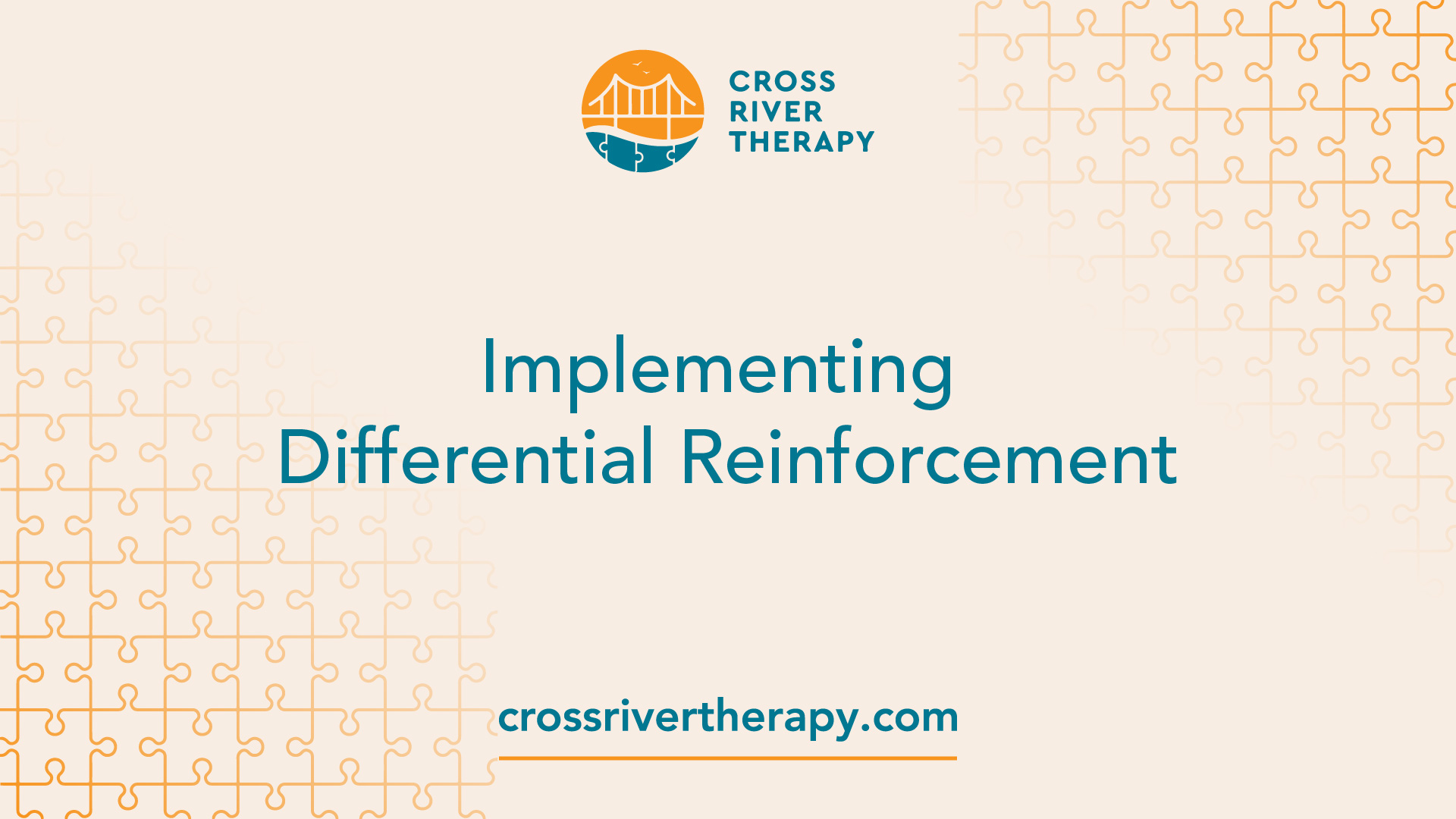How Does Differential Reinforcement Work in ABA Therapy?
Discover effective techniques for behavior modification in children with autism.

Understanding ABA Therapy
ABA therapy, or applied behavior analysis, has been used to help children with autism and related developmental disorders since the 1960s. It is a therapeutic approach that focuses on improving social and emotional skills by working one-on-one with a practitioner. The goal of ABA therapy is to promote positive behaviors and reduce challenging behaviors through interventions based on learning theory principles.
History of ABA Therapy
The origins of ABA therapy can be traced back to the groundbreaking work of psychologist Dr. O. Ivar Lovaas in the 1960s. Dr. Lovaas developed a comprehensive and individualized approach to help children with autism acquire language and social skills. His research demonstrated the effectiveness of early intensive behavioral intervention in improving outcomes for children with autism.
Over the years, ABA therapy has evolved and expanded, incorporating various techniques and strategies to meet the specific needs of individuals with autism. Today, it remains one of the most widely recognized and evidence-based treatments for autism spectrum disorder.
Individualized ABA Programs
One of the key principles of ABA therapy is the individualization of treatment programs. ABA programs are not "one size fits all" but are tailored to meet the unique needs of each learner. A board-certified behavior analyst (BCBA) plays a crucial role in designing and overseeing these individualized ABA programs.
A BCBA is a qualified professional who specializes in behavior analysis and has extensive experience working with individuals with autism. The BCBA works closely with the child and their family to assess their strengths, challenges, interests, and preferences. Based on this assessment, the BCBA develops a personalized treatment plan that addresses specific goals and targets behaviors that need to be improved.
Throughout the ABA therapy process, the BCBA monitors the child's progress, makes necessary adjustments to the treatment plan, and provides guidance and support to the child, their family, and other professionals involved in their care. This individualized approach ensures that the therapy aligns with the child's unique needs, promotes their development, and maximizes their potential for success.
By implementing individualized ABA programs, children with autism can receive the targeted support they need to develop crucial skills, enhance their independence, and thrive in various settings.
In the next sections, we will explore the different components and techniques involved in ABA therapy, including positive reinforcement, discrete trial training, and more.
Components of ABA Therapy
ABA therapy (Applied Behavior Analysis) is a comprehensive and evidence-based approach used to support individuals with autism in developing new skills and reducing challenging behaviors. It consists of various components that work together to promote positive behavior change and improve overall quality of life for individuals on the autism spectrum.
Positive Reinforcement
Positive reinforcement is a fundamental strategy used in ABA therapy, where individuals are more likely to repeat a behavior if it is followed by something valued, such as a reward. This reinforcement can be in the form of praise, tokens, access to preferred activities, or tangible rewards. By providing positive reinforcement for desired behaviors, ABA therapists aim to increase the likelihood of those behaviors occurring again in the future.
Studies have shown that positive reinforcement plays a crucial role in behavior modification and skill acquisition [1]. For children receiving ABA therapy, positive reinforcement is often used when they complete tasks correctly or reach specific goals. By receiving something of personal value after exhibiting a desired behavior, children are motivated to repeat the behavior, helping to instill positive behaviors over time.
Role of a BCBA
A Board Certified Behavior Analyst (BCBA) is a professional who plays a vital role in the implementation and supervision of ABA therapy. BCBA's have completed extensive training and hold a certification recognized by the Behavior Analyst Certification Board (BACB).
In the context of ABA therapy, a BCBA conducts assessments to identify the individual's strengths, deficits, and specific behavioral needs. They collaborate with the individual and their family to develop individualized ABA programs that target specific goals and objectives. These programs are tailored to the unique needs of each individual and are continuously monitored and adjusted by the BCBA to ensure progress towards desired outcomes.
The BCBA also trains and supervises the team of therapists and technicians who deliver ABA therapy. They provide ongoing support, guidance, and supervision to ensure the effective implementation of behavior intervention strategies and techniques.
The role of a BCBA is crucial in ensuring that ABA therapy is implemented with fidelity and that individuals receive the highest quality of care. They work closely with families, educators, and other professionals to promote generalization of skills across various settings and to support individuals in reaching their full potential.
In the next sections, we will explore the effectiveness of ABA therapy, different techniques used within ABA therapy, and the importance of differential reinforcement in behavior modification.
Effectiveness of ABA Therapy
ABA therapy, based on its evidence-based practice and extensive research, has been widely recognized as an effective treatment for individuals with autism spectrum disorders. The therapy has shown positive outcomes in various areas of development and behavior, making it a valuable intervention for children diagnosed with autism.
Evidence-Based Practice
ABA is considered an evidence-based best practice treatment by the US Surgeon General and the American Psychological Association. More than 20 studies have demonstrated the effectiveness of ABA therapy in improving outcomes for many children with autism [1]. These studies have consistently shown the positive impact of ABA therapy on intellectual and social functioning, language development, and behavior.
Studies have also indicated that when ABA therapy is consistently delivered for 1-3 years, it leads to significant improvements in various areas of development. The therapy has been found to be most effective when initiated during the early years of a child's life, before the age of 4. Intensive and long-term therapy using ABA principles has been shown to produce large gains in development and even reduce the need for special services later in life.
Benefits of Intensive Therapy
The effectiveness of ABA therapy is further enhanced by the intensity and duration of the therapy. Studies have shown that children who participate in ABA therapy for 25 to 40 hours per week, over a period of one to three years, demonstrate positive outcomes. Intensive, long-term therapy has been associated with significant gains in various areas, including communication, social skills, adaptive behavior, and academic performance.
The individualized nature of ABA therapy allows it to be tailored to the unique needs of each child. ABA programs are designed to address specific goals and target behaviors, making the therapy highly personalized and effective. The therapy focuses on breaking down skills into smaller, manageable steps, and systematically teaching and reinforcing these skills over time.
By implementing ABA therapy with intensity and consistency, parents and caregivers can provide their child with the best opportunity to achieve optimal outcomes. The therapy has proven to be highly effective across different age groups, helping individuals with autism spectrum disorders reach their full potential.
ABA Therapy Techniques
When it comes to ABA therapy, there are various techniques used to promote skill development and behavior change in individuals with autism. Three commonly employed techniques are Discrete Trial Training (DTT), Pivotal Response Treatment (PRT), and Early Start Denver Model (ESDM).
Discrete Trial Training (DTT)
Discrete Trial Training (DTT) is a method of teaching often used within ABA therapy. This technique involves a healthcare provider working one-on-one with the child in a highly structured environment. During DTT, the child is presented with a series of tasks or trials, and their responses are systematically reinforced or corrected. Each trial is discrete and focuses on teaching a specific skill or behavior.
The structured nature of DTT allows for repetition and reinforcement, which helps children with autism learn new skills and concepts. It can be particularly effective in teaching foundational skills, such as language, communication, and social interactions. DTT breaks down complex behaviors into smaller, more manageable steps, making it easier for children to learn and make progress.
Pivotal Response Treatment (PRT)
Pivotal Response Treatment (PRT) takes a more naturalistic and child-led approach to ABA therapy. This technique focuses on identifying and targeting "pivotal" areas of a child's development, such as motivation, communication, and social initiations. PRT utilizes the child's interests and attention to guide their learning and promote skill acquisition.
In PRT, therapy sessions are designed to be enjoyable and engaging, using play and other activities that are a normal part of the child's life. By incorporating the child's interests, PRT aims to increase motivation and promote active participation. This technique emphasizes natural contingencies, such as turn-taking and shared enjoyment, to encourage the development of language, social, and behavioral skills.
Early Start Denver Model (ESDM)
The Early Start Denver Model (ESDM) is an ABA-based intervention specifically designed for young children with autism. This comprehensive treatment approach combines elements of play-based activities, like PRT, with more traditional ABA techniques, such as DTT, when needed. ESDM focuses on creating a positive and engaging learning environment to promote skill development and social-emotional growth.
ESDM aims to enhance various developmental domains, including communication, language, social skills, cognition, and adaptive behaviors. The model incorporates a curriculum that sets multiple goals within one activity, allowing therapists to address different areas of development concurrently. The use of joint engagement, imitation, and positive reinforcement helps facilitate learning and promote progress in children with autism.
By employing techniques like DTT, PRT, and ESDM within ABA therapy, highly individualized interventions can be developed to target specific needs and goals of children with autism. These techniques provide structured learning opportunities, capitalize on motivation and interests, and create engaging environments to maximize developmental outcomes.
Importance of Differential Reinforcement

In the realm of Applied Behavior Analysis (ABA) therapy, differential reinforcement plays a crucial role as a behavior modification strategy. It involves selectively reinforcing desired behaviors while withholding reinforcement for undesired behaviors. This technique aims to increase the likelihood of desired behaviors occurring while reducing or eliminating unwanted behaviors.
Behavior Modification Strategy
Differential reinforcement encompasses both positive reinforcement and negative reinforcement. Positive reinforcement involves providing a pleasant stimulus to strengthen a behavior, while negative reinforcement involves removing an aversive stimulus to increase the occurrence of a behavior. By utilizing these reinforcement techniques strategically, ABA therapists can shape behavior effectively.
The importance of differential reinforcement lies in its ability to focus on reinforcing positive behaviors and alternatives instead of solely attempting to suppress or punish undesired behaviors. This approach promotes a more proactive and constructive way of modifying behavior, leading to more sustainable and long-term results. By reinforcing desired behaviors, individuals with autism can learn and develop new skills, leading to increased independence and improved social interactions.
Types of Differential Reinforcement
There are several types of differential reinforcement techniques used in ABA therapy. These techniques are tailored to address specific behavioral goals and challenges. Here are three common types of differential reinforcement:
- Differential Reinforcement of Alternative Behavior (DRA): This technique focuses on reinforcing a behavior that serves the same function as the problem behavior but is more appropriate or desirable. By reinforcing an alternative behavior, individuals are motivated to engage in the preferred behavior instead of the problem behavior.
- Differential Reinforcement of Incompatible Behavior (DRI): In DRI, therapists identify a behavior that is incompatible with the problem behavior and reinforce it while withholding reinforcement for the problem behavior. By promoting an incompatible behavior, individuals are more likely to engage in the desired behavior rather than the unwanted behavior.
- Differential Reinforcement of Other Behavior (DRO): DRO involves reinforcing the absence of a problem behavior for a specific period while withholding reinforcement for the problem behavior itself. By focusing on periods when the problem behavior is not exhibited, individuals learn to engage in alternative behaviors or remain behaviorally neutral, leading to a reduction in the unwanted behavior [5].
By understanding and implementing these different types of differential reinforcement, ABA therapists can tailor interventions to meet the specific needs of individuals with autism. This approach encourages the development of adaptive behaviors, functional skills, and positive interactions, ultimately improving the overall quality of life for individuals and their families.
Implementing Differential Reinforcement

Differential reinforcement is a behavior modification strategy commonly used in ABA therapy to target and shape specific behaviors. By using reinforcement techniques, therapists aim to increase desired behaviors while reducing or eliminating problematic behaviors. Let's explore some differential reinforcement techniques and studies that highlight its effectiveness.
Differential Reinforcement Techniques
Differential reinforcement involves two key components: encouraging appropriate behavior by giving or withholding reinforcement, and recognizing 'appropriate' behavior as either not behaving inappropriately or choosing a positive response over a negative one. Here are some commonly used techniques:
- Differential Reinforcement of Incompatible Behavior (DRI): This technique involves identifying a behavior that is incompatible with the problem behavior and reinforcing it while withholding reinforcement for the problem behavior. By reinforcing the incompatible behavior, the individual is more likely to engage in the desired behavior instead of the problematic one.
- Differential Reinforcement of Alternative Behavior (DRA): DRA focuses on reinforcing a behavior that serves the same function as the problem behavior but is more appropriate or desirable. It aims to replace the problem behavior with an alternative behavior that achieves the same outcome in a socially acceptable manner [5].
- Differential Reinforcement of Low Rates (DRL): DRL encourages the individual to reduce the frequency of a behavior. It involves reinforcing the behavior when it occurs at a lower rate or with longer intervals between instances. This technique is beneficial when the goal is to decrease excessive or repetitive behavior while still allowing it to occur in a controlled manner [6].
Studies on Differential Reinforcement
Several studies have examined the effectiveness of differential reinforcement techniques in behavior modification. Here are a couple of notable studies:
- Vollmer, Iwata, Zarcone, Smith, and Mazaleski (1993) conducted a study comparing the effects of noncontingent reinforcement and differential reinforcement of other behavior. The authors found that both interventions were effective, with noncontingent reinforcement and differential reinforcement of other behavior producing positive outcomes. Noncontingent reinforcement was found to be particularly useful in avoiding some limitations of differential reinforcement of other behavior [7].
- Legray, Dufrene, Mercer, Olmi, and Sterling (2013) evaluated the effectiveness of differential reinforcement of alternative behavior (DRA) with typically developing young children in a classroom environment. The study aimed to reduce problem behavior while increasing more appropriate behavior. The authors found that using DRA, along with pre-teaching an alternative behavior, had a significant impact on the behavior of the children, leading to positive outcomes.
These studies highlight the efficacy of differential reinforcement techniques in modifying behavior. ABA therapists utilize these techniques and tailor them to meet the individual needs and goals of each child. By implementing differential reinforcement strategies, therapists can effectively shape behaviors and promote positive change.
In the next section, we will explore the importance of differential reinforcement in ABA therapy and its role in behavior modification. Stay tuned!
References
[1]: https://www.autismspeaks.org/applied-behavior-analysis
[2]: https://www.webmd.com/mental-health/what-is-applied-behavior-analysis
[3]: https://my.clevelandclinic.org/health/treatments/25197-applied-behavior-analysis
[4]: https://www.goldstarrehab.com/parent-resources/who-is-aba-therapy-for
[5]: https://www.nu.edu/blog/what-is-differential-reinforcement/
[6]: https://www.appliedbehavioranalysisedu.org/what-is-meant-by-differential-reinforcement-in-the-context-of-applied-behavior-analysis/



